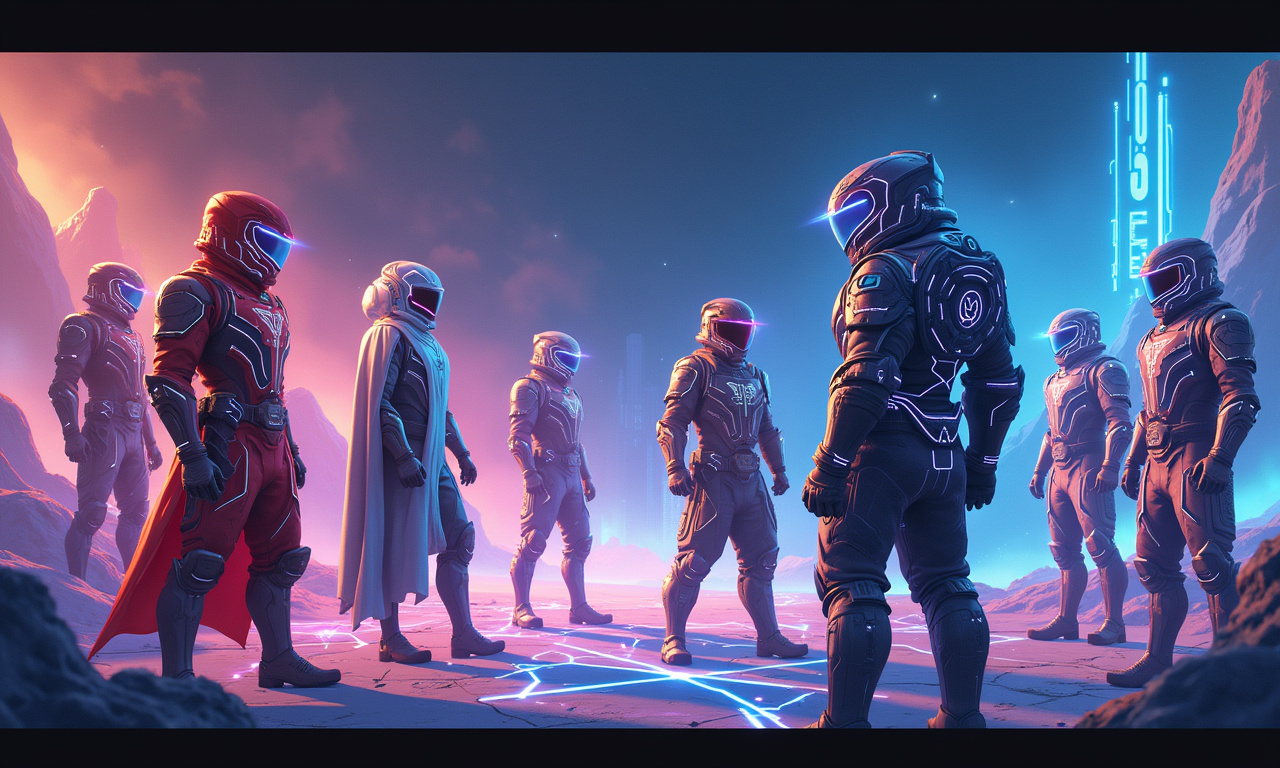Metaverse Football League (MFL) has significantly upgraded its platform by using Generative AI (GenAI) to revamp the visual appearance of its in-game soccer players. This change brings the more whimsical, cartoon-like characters of the past into a world with more realistic avatars. The change increases player engagement and improves product attractiveness. This really serves to secure MFL as a strong player amongst the quickly changing competition in the emerging Web3 gaming space.
Image MFL used GenAI as part of a strategy to provide lifelike, unique looks to 180,000 players. Developers say that this overhaul is one aspect of a larger strategy to improve the overall appeal of the game and player experience.
The company did a logo touchup effort in a secondary detail pass to better AI generations. This helped guarantee the most visually striking and high-quality results.
As per MFL’s CEO, Mathurin Blouin, this shift in MFL towards photorealistic players wasn’t just a random decision to compete.
"We didn’t do it to chase a trend. We did it because our universe needed it." - Mathurin Blouin
There aesthetic overhaul intentionally designs around the game feeling more like an immersive, high-class tabletop experience.
While MFL’s game is built on entertaining six-week seasons, promotions and incentives are carefully calibrated to keep players hooked. Each of the players assumes the role of a club manager, directly engaged in the task of recruiting players and negotiating with other users. It’s this strategic gameplay that provides players with such a unique and exhilarating challenge. Combined with the new visual improvements, it’s sure to make for a thrilling and captivating adventure.
To power the language re-imagining, MFL developed a complex arrangement involving more than 400 interconnected processing units. This deep, expensive infrastructure allowed players to regenerate their visuals at an unmatched speed.
"Every image passed through multiple stages: It started with a prompt engine. A smart script that randomized player traits like their body type, hairstyle, expression, and more, to build a believable, varied universe from structured randomness," - Mathurin Blouin
The first one would run background removal in parallel through a second queue of GPU pods, outputting transparent images. This rapid process facilitated rapid, high-quality image processing.
To accomplish this, MFL developed an in-house 3D kit generation tool. Then they’re able to create endless variations of club jerseys with all sorts of colors, materials and made up sponsors. This new tool greatly increases the craft and flexibility to make the look of the game unique.
"We built our own in-house 3D kit generation tool, which allowed us to design hundreds of club shirts using custom patterns, textures, and fictional brand logos. Those kits were passed back into the pipeline, and applied in a multi-step process: First, we used a segmentation model to detect the original shirt in the image, and then an advanced outpainting workflow to perform the clothing change," - Mathurin Blouin
The firm implemented a 3D segmentation model and advanced outpainting workflow to add new kits into a multi-step process. This provided a level of continuity that made the transitions between costume changes fluid and visually cohesive.
The whole process of retrofitting each and every player with a new more realistic appearance took only a handful of days. This quick turnaround is indicative of the efficiency and power of MFL’s AI-driven system.
"We re-rendered 180,000 footballers, each one linked to their real in-game identity, fully isolated on transparent backgrounds, and ready to be used not just in the game UI – but in video, audio, social, and any other format we dream up in the future," - Mathurin Blouin
MFL strategically avoids Web3 tokens to prevent speculation, focusing instead on mainstream adoption through a hybrid Web2/Web3 approach. This artistic direction is intended to help introduce and attract a wider audience to the game.
MFL has complete control, maximum flexibility and no reliance on proprietary models. This independence provides more room for innovation and customization.
The firm’s target run rate revenue goal is $2 million by the end of 2025. Backing up this aim is a pledge to long term operations in the coming three years. With rapid customer acquisition, MFL’s average revenue per user is approximately $270, helping drive profitability and low cost of operation. This extremely solid financial results further illustrates the durability of MFL’s business model.
In discussing the company’s emphasis on digital ownership of NFTs, Blouin stressed the point of monetization. Through this kind of strategy, players are able to own and trade their assets within their games.
"We wanted a world that feels lived-in, with players that could believably exist in real football culture. Photorealism isn’t just about visuals — it changes perception. It makes MFL feel professional. It sharpens first impressions," - Mathurin Blouin
The improved player graphics really help make for that big-time, polished and professional gaming experience.
"And crucially, it opens the door to a future of dynamic storytelling and customization: custom jerseys, player aging, AI-generated video content. This opens up a world where our players will someday be able to give post-match interviews, have their own social media accounts, appear in ads or interact directly with their in-game agents and managers," - Mathurin Blouin
The new system not only opens up dynamic storytelling possibilities in the game, but lays a whole new foundation for customization and RPG elements. These innovations hold a lot of potential to make player experiences even more rewarding and meaningful.
Mathurin Blouin remarked how these results of better engagement aided MFL to be competitive against heavyweight titles in the Web3 gaming space. The added vibrancy has clearly helped the title’s market popularity as it adds another layer of depth and attractiveness to the game.




